Just as daffodils are the classic heralds of spring, the large, usually pink, trumpet-shaped flowers of Amaryllis belladonna are a sure sign of impending fall. Rising straight up on tall, sturdy, leafless stems, the blooms seem to challenge the very notion that the long, hot days of summer are drawing to a close.
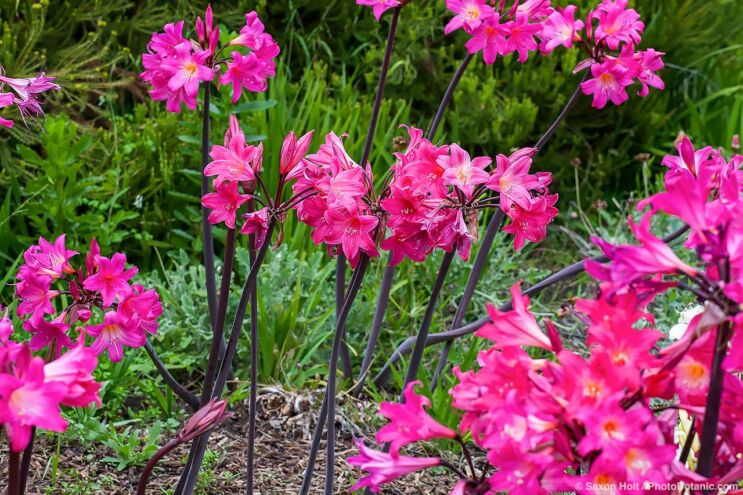
Amaryllis belladonna blooms in fall.
Amaryllis belladonna is familiar to almost everyone whether they know it by name or not. Today these plants are most often seen abandoned along roadsides or as nostalgic remnants of older gardens. Hugely popular in gardens of the past, they are self-sufficient enough to have persisted on their own many decades after planting.
All belladonnas, or naked ladies as they are often called, may look alike when viewed from a passing car –a disciplined contingent of identical pink trumpets floating, untethered, two feet or more above the ground. On close inspection they can differ in fascinating ways. Connoisseurs revel in the details.

Amaryllis belladonna flowers may be a lilac shade of pink, pale or dark pink, magenta, or white with patterns in contrasting shades or colors.
Flowers vary not only in color but in size, shape, and subtle patterning. Petals may be almost any shade of pink or white, sometimes near-red, with tips, edges, or bases a different color or a darker or lighter shade. Petals may be faintly striped or prominently banded and broad or narrow, almost spidery. Throats are usually yellow but sometimes white, at other times light or dark pink. Plants also vary in timing of bloom and in number of flowers on each stem.
It is possible, even likely, that most or all of the variation in amaryllis plants today is a result of hybridization by breeders or naturally in gardens or in the wild. Native to southwestern South Africa, Amaryllis belladonna was brought into cultivation in the eighteenth century and crossed and re-crossed countless times over more than 150 years. It is likely that few if any of the plants grown in gardens, offered for sale, or found in untended spaces today are representative of the South African species.
Searching the internet for amaryllis or even Amaryllis belladonna will surface dozens of superficially similar but quite different plants in the genus Hippeastrum. Although these can be grown outdoors in warm-winter climates, they are heavily marketed as indoor plants and often discarded after serving their purpose as holiday gifts and décor.
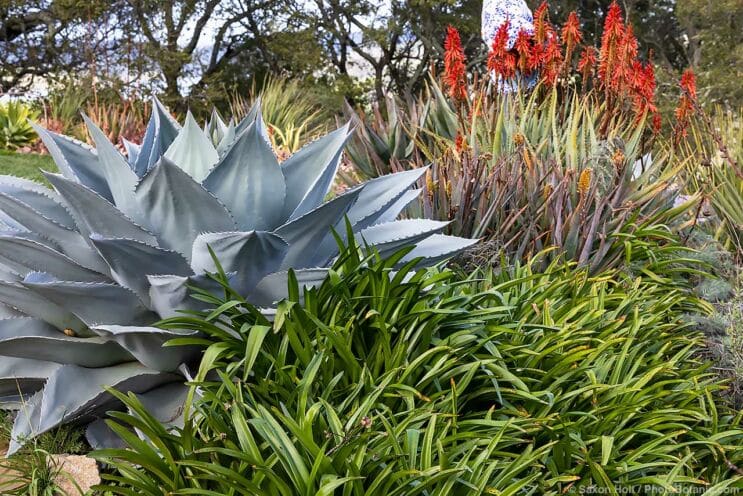
The straplike green leaves of Amaryllis belladonna (foreground) appear in winter, dying back in summer before flowers emerge in fall.
Websites sometimes confuse the two genera, mixing plant descriptions for one genus with planting instructions for the other. If you are searching for a particular plant, watch out. There is even a lovely little orange-flowered hippeastrum marketed under the trademarked name amaryllis Belladonna — “not to be confused,” the ad copy warns, “with Amaryllis belladonna.”
Both amaryllis and hippeastrum are bulbs with straplike green leaves and funnel- or trumpet-shaped flowers, but it’s fairly easy to tell which plant is under discussion. Hippeastrums are winter-dormant and flower in summer; they are forced into bloom for the winter holidays. They also are more tender than belladonnas, native to tropical and subtropical South America.
Belladonnas are summer-dormant and, as we all know, bloom in fall. They are disease-free, ignored by deer, and naturalize slowly from bulblets and seeds with virtually no care and no summer water. It might seem that there is hardly a plant better suited to mild-winter, winter-wet, summer-dry climates.


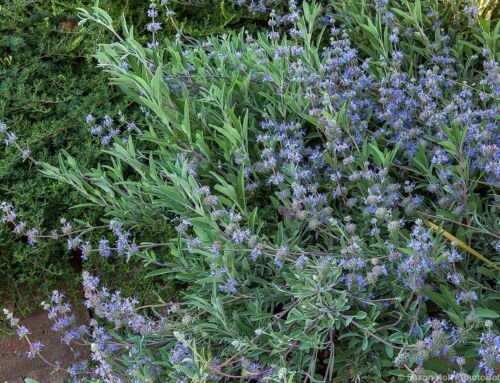
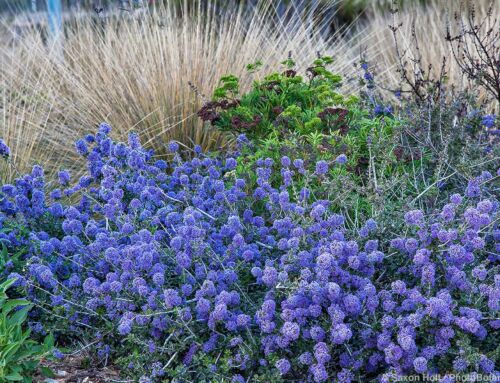
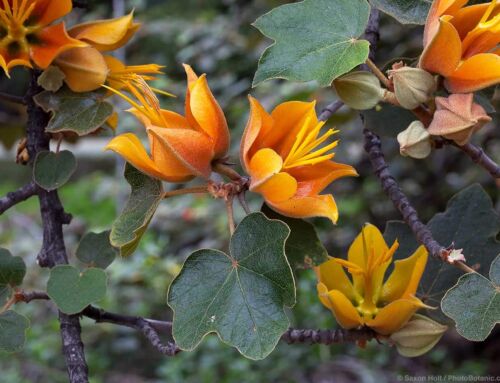
Very nice intelligent article on this wonderful bulb, which has settled elegantly into the Californian landscape, and adds so many episodes of joy viewing the late summer landscape. I’ve always been surprised how little use many of the really excellent hybrids that have been created are ever seen in gardens – since they don’t demand much. Their placement in landscapes does require consieration of the size of the foliage mounds during the winter, and the void created before flowering, but they can add so much to brighten up large sculptural plants, and, if clustered (as they will given time on their own), can extend a garden visually into the distance which may be otherwise underdeveloped.
Look forward to them every year.
Thanks Roger, you are one of the “connoisseurs” I was thinking about when I wrote this piece. I do love these bulbs, no idea why they seem to have gone out of fashion. I just bought some pure white-flowered hybrids and can hardly wait to see them come up next fall!
Nora